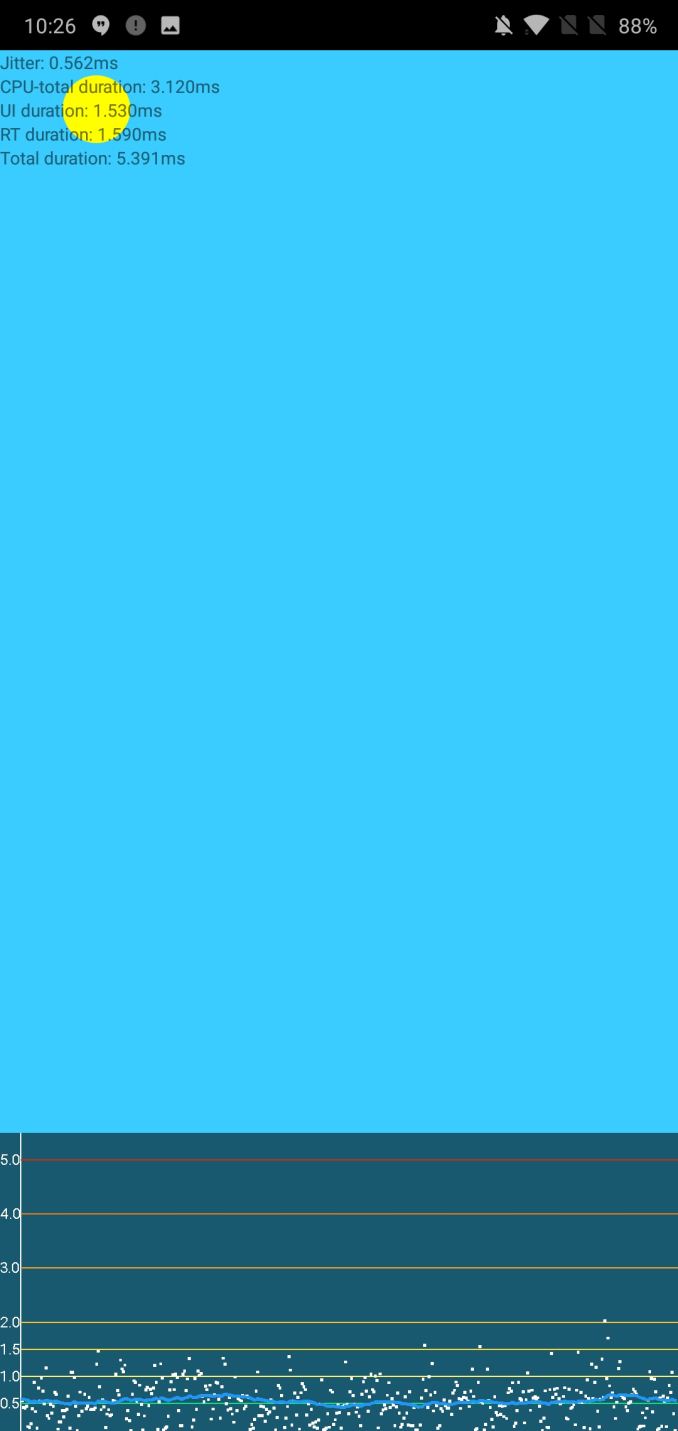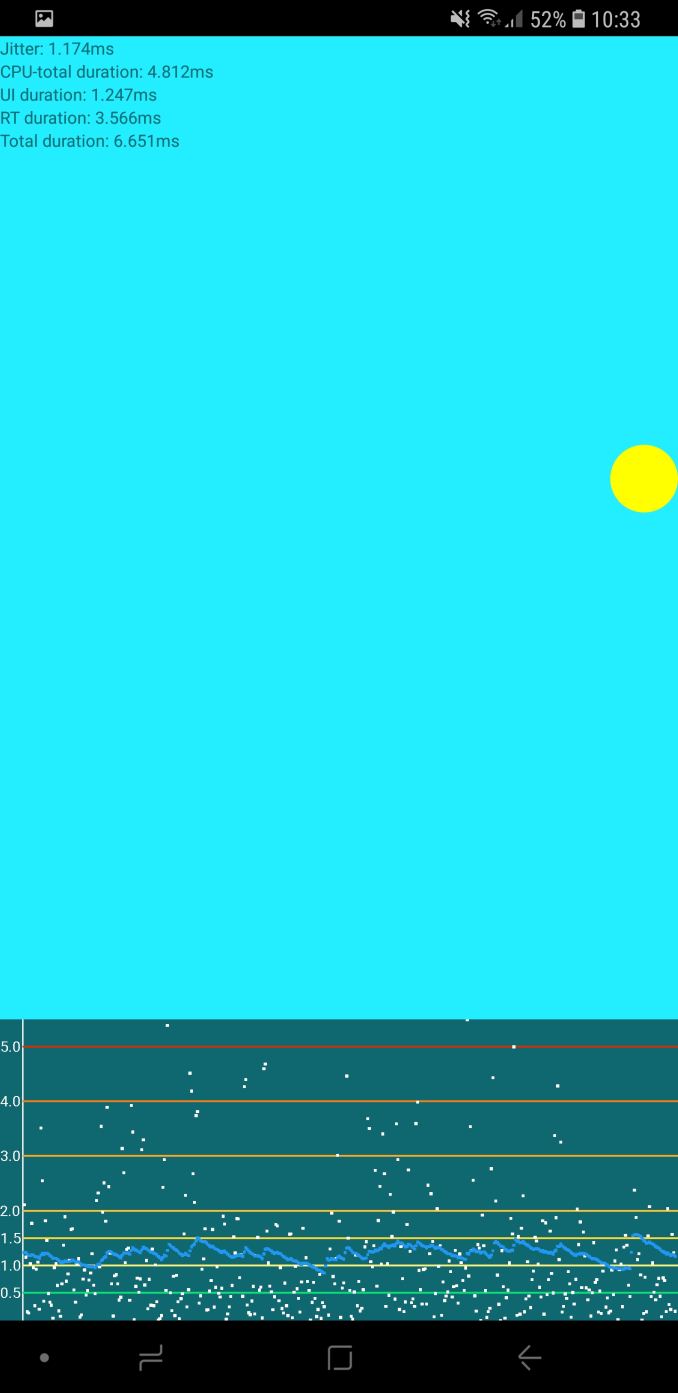The OnePlus 6 Review: Among The Best Of 2018
by Andrei Frumusanu on July 27, 2018 8:30 AM EST- Posted in
- Mobile
- Smartphones
- OnePlus
- OnePlus 6
System Performance
Another Snapdragon 845 device, another system performance section to dwell into. By now following the Galaxy S9 review and Mi MIX 2S review we should have some clear expectations of how the OnePlus 6 should perform. In my MIS 2S review in particular I was very vocal about how superbly the phone performed in terms of performance, and attributed this to a great software implementation on the side of SoC. The OnePlus 6 very much deserves the same praise as it not only has the same extraordinary snappiness, but actually ever so slightly manages to beat the MIX 2S in some cases.

Starting off with PCMark’s Web Browsing test, the OnePlus 6 is very much within the top scorers in terms of performance.

The video editing test again is mostly performing as expected.

In the Writing 2.0 test which uses Android APIs and does operations such as text editing and PDF rendering the OnePlus 6 actually manages to take the top spot in terms of performance. This test alone correlates extremely well with overall system performance of a phone and the OP6 taking first place is indeed very well representative of the phone’s feel.

Photo editing test, alongside the Mi MIX 2S also takes top spots among current devices.

The data manipulation score averages out among top Snapdragon 845 devices.

Finally the total score matches the Mi MIX 2S. There’s not much more to say here other than Qualcomm’s scheduler improvements in the S845 BSP have really paid off this generation and this directly results in excellent real-life performance.


The web tests showcase pretty much identical performance to the Mi MIX 2S which in turn both slightly outperform other S845 devices such as the Galaxy S9 and LG G7.
UI Fluidity
Over the past few months there’s been more outspoken discussions about Android speed tests versus actual device fluidity. In general the latter is extremely hard to quantize into a figure and there will always be corner cases or outliers that will probably perform better or worse when comparing between devices.
In the context of the OnePlus 6 as well as Snapdragon 845 devices I’ve looked more into what actually is different between them and what is seemingly causing the OP6 and MIX 2S to perform better than, say the Snapdragon Galaxy S9. Looking deeper into the kernel it looks like OnePlus and Xiaomi are both using a newer kernel build with more scheduler modifications than the kernels running on the S9 and G7. The details here go quite low level and is out of the scope of any public article, but the effects can be easily seen.


OnePlus 6 vs Galaxy S9+ (S845) Jitter Test
In the UIBench Jitter test we see the difference between the OnePlus 6 and the Galaxy S9 – the latter has a lore more inconsistent rendering frame-times. While in this test both have very clearly great frame-times well under 16.6ms – having more consistent frame times in turn can avoid random workload events that might push frame times over the deadline and result in dropped frames. The OnePlus 6 so far has been the best device in this particular test – only the Pixel phones come near to it but they don’t seem to have the same consistency over time.
Overall system performance of the OnePlus 6 deserves the same praise as the MIX 2S – both devices are currently the very best and fastest on the market and you will be absolutely not disappointed in their performances.










90 Comments
View All Comments
Icehawk - Saturday, July 28, 2018 - link
Ahhhhh. That’s why phones aren’t USB3, ok I always wondered why not but never actually researched why.jcc5169 - Friday, July 27, 2018 - link
Is One-Plus even available in the US market?PeachNCream - Friday, July 27, 2018 - link
That's a nice phone! I'd prefer the addition of a microSD slot by maybe adding the capability to one of the SIM slots (I've seen a few dual SIM phones offer up that option) since removable storage is nice to have if you're moving from one phone to another. In this case, there's the potential to lose quite a bit of data if the OP6 dies suddenly. The price increase for storage capacity is VERY reasonable as well. It's way outside of my price range for something I carry with me on a daily basis though. There's just too many day-to-day bumps and knocks around along with the risk of loss or theft that have me convinced that it's not worth the price of entry to get something above the bottom feeders like the $5.29 new Huawei I just picked up last week. Phones, in my mind, are disposable devices so low-cost is the way to go.eastcoast_pete - Friday, July 27, 2018 - link
Nice review, Andrei! Question: I may have overlooked it, but this phone is NOT water- or dust proof, at least as far as I can tell, correct? That is a major minus point for a flagship phone in my book, as it "breaks" the deal/compromise of sealed battery, but IP67 or 68 water and dust proofing. Hey, even Apple came around to that view eventually. Here, we get the worst of both worlds, no user-replaceable battery, no SD card slot, and no water and dust proofing.Different question @ Andrei: are all benchmark tests for phones conducted at about the same room temperature? I assume they are, but, if they are not, that would add a major variable. Heat dissipation is just so much easier when in a room at, let's say, 20 C, versus one at 30 C (and we are having hot summers this year). And, circling back to my comment about water proofing, I imagine it's harder for a fully sealed phone (like the majority of current flagship phones, i.e. S9, S9+, V30/35, Experia Z etc.) to dissipate heat than it is for phones that aren't fully sealed up. Any comments? Thanks!
Andrei Frumusanu - Friday, July 27, 2018 - link
It's not IP certified but as you may have read in some teardowns it does have many of the protections that are usually found in IP68 phones. I guess it could survive accidental water situations.The sustained are done in constant-ish (21+- 2°C) temperature, yes. I don't think IP proofing has any effect on thermals, the ingress points are irrelevant to temperature. Most phone's thermals are determined by the mid-frame build and how it's able to dissipate heat over its whole footprint to the screen and back.
128bit - Friday, July 27, 2018 - link
Never like chinese phones there phones looks good, but there quality overall not that good same like there cars and by the way this phone overheating.Dr. Swag - Friday, July 27, 2018 - link
Great article, but could you take care to proofread a bit better? There's tons of grammar mistakes (mostly missed commas) all over the place.Dr. Swag - Friday, July 27, 2018 - link
For the benchmarks, did you test for benchmark cheating at all?tsk2k - Friday, July 27, 2018 - link
Yes! Thank you so much Andrei and Anandtech, this is the only proper way to review a mobile phone.The web tests and frame drop testing is amazing, finally a way to quantify what I've been saying for years.
shoreview - Friday, July 27, 2018 - link
Too bad that they refuse to put Verizon Band 13 LTE in there. It's pointless crippling of the phone. Like the missing ex-Nextel CDMA band that Sprint uses.Any insight on why this is? Did Verizon and Sprint actively intervene to keep OnePlus off their networks? In any case I've been on Android from the start but the support situation and security update situation are leading me to look more and more at iPhone. Which won't come easy; the USB lockdown on iOS and certain aspects of the OS are annoying to say the least. But this was one of my last hopes for replacing my Verizon-supplied Note 4 with another Android and it has been dashed. Getting a non-carrier-branded Samsung is a non-starter until they start taking long-term security support seriously; even Google Pixel is short of Apple standards by a year or two.